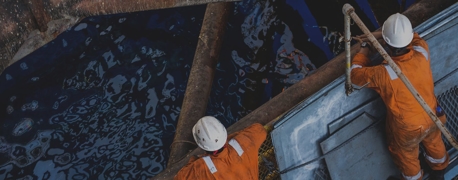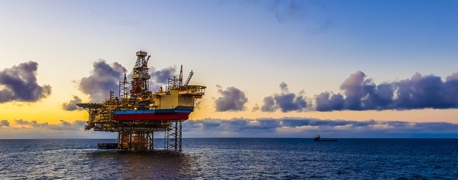Wet Weather Gear Every Commercial Deckhand Needs

Deckhands play a crucial role in the operation and maintenance of a commercial vessel. Their job duties may vary widely depending on the type of vessel and their experience level. Duties may range from security and helping passengers to cleaning and operating winches or other equipment on deck. For a deckhand, the right gear is essential not only for comfort but for safety as well. This is particularly true in wet weather, where the risk of cold stress and accidents may be greater.
Deckhands on cruise ships, cargo vessels, barges, and commercial fishing vessels need the right wet weather gear. We’ve put together information on some of the best materials and types of gear for deckhands on commercial vessels.
Types of Commercial Deckhand Gear
Waterproof Apparel (Jackets, Pants, Overalls, Bibs)
Staying dry is essential as a commercial deckhand, and your clothing will be your first line of defense against rain and sea spray. From traditional oilskins to a full flotation suit, a deckhand’s apparel should be suited for the environment, weather, and type of work they will be performing. A deckhand may opt for a jacket and trousers or a jacket with overalls, waders, or a bib. Flotation suits can come in one or two pieces and are watertight, thermal insulated, and buoyant.
To be considered waterproof, a jacket or other piece of apparel must be able to resist a certain amount of water pressure, which is measured according to the hydrostatic head test. The higher the number, the better the resistance to rain and sea spray.
Personal Flotation Device (PFD)
Another crucial part of a commercial deckhand’s gear is their personal flotation device (PFD). PFDs should be worn by any crew member on the deck of a ship, even in calm waters and pleasant weather. If a deckhand should fall overboard, a PFD will keep them afloat and can even turn an unconscious person over in the water. This can give the crew valuable time to recover the deckhand. Even an experienced swimmer who is unharmed when falling into the water could experience loss of muscle control, increased heart rate, and uncontrollable gasping as a result of cold immersion. A PFD will keep the wearer afloat so they can catch their breath and call for help.
PFDs should be appropriate for the type of gear the deckhand is wearing as well as weather and water conditions. Even deckhands who are wearing flotation suits should wear personal flotation devices as well.
Boots
The right boots can make all the difference for a commercial deckhand. In addition to providing protection from the cold and water, quality boots will help with traction and can offer protection against foot injuries caused by falling objects or tools.
The boots a deckhand wears will depend on the type of vessel and the deckhand’s duties. Deckhands on commercial fishing vessels may rely on Wellington boots, which are made from rubber and are waterproof. Waterproof safety boots with reinforced toes and Kevlar protection can prevent injuries caused by heat, pressure, or sharp objects. These are more likely to be worn by deckhands on cargo ships, tugs, and barges.
Gloves
Gloves are yet another key part of a commercial deckhand’s gear. They can offer protection from heat or cold, wet conditions, and chemical exposure. They can prevent blisters, cuts, and burns.
Deckhands must have the correct gloves for the jobs they’re performing and the current weather and sea conditions. Gloves that are too lightweight may wear through quickly and increase the risk of finger or hand injury. Gloves that are too heavy or bulky may make it hard to perform certain tasks. Gloves that are too loose and do not fit properly can even get caught in lines and make a deckhand’s job harder and more dangerous than it should be.
Headgear
Working on deck can present many hazards. Cranes, deck winches, wires, cables, and other equipment and heavy objects can swing or fall and strike deckhands, making a hardhat or helmet a crucial piece of equipment. Quality headgear can also provide a deckhand with protection from the sun, rain, sea spray, and cold. It is important to choose the right headgear for the situation, for maximum safety and comfort.
Personal Protective Equipment (PPE)
Personal protective equipment (PPE) is gear worn to minimize exposure to workplace hazards. It may offer protection against heat, chemicals, electricity, or other external forces that could harm a worker. Deckhands require their fair share of PPE because of the various hazards they may encounter working on a commercial vessel.
For commercial deckhands, personal protective equipment (PPE) may include:
- Safety glasses or goggles
- Ear protection
- Mask respirators
- Gloves
- Fall protection equipment
- Personal flotation devices
- High-visibility apparel
- Helmets or hardhats
- Safety shoes
Personal protective equipment must be appropriate for the job at hand, and it must fit well. Proper fit isn’t important just for a deckhand’s comfort; it will influence whether gear works and protects as it should. Maritime employers must implement PPE programs that discuss the hazards present, inform workers of the appropriate types of gear for their job duties, and monitor workers to ensure PPE is being used properly. According to OSHA, employers are required to pay for PPE that complies with OSHA standards, with some exceptions.
Other Important Deckhand Gear
Commercial deckhands should also keep other gear on hand for protection from water, wind, and sun – and to help them carry out their job duties. This may include a knife, sunglasses, sunscreen, warm socks, a tool belt, and knee pads. Wearing the appropriate clothing underneath waterproof apparel is also crucial to staying warm, comfortable, and dry.
The Best Fabrics for Working on Deck
Commercial deckhands work in some of the most challenging conditions. They face sea spray, rain, sun, wind, and cold or hot temperatures almost constantly, sometimes from one extreme to another in a single day. When it comes to having the right gear, the fabric and materials used to make it are essential for your safety and comfort.
Certain fabrics are not ideal for wet conditions. This includes cotton and down, which both absorb water and may become heavy when wet. Down is also fairly expensive. Deckhands should opt for waterproof outer layers and an inner layer that is breathable and moisture-wicking. They should also wear high visibility colors and reflectors to make sure they are visible to other crew members.
Why Wet Weather Gear Is So Important
Having the right gear is important for deckhands for many reasons. In wet conditions – which are almost constant on the deck of a ship – crew members may experience injury or illness as a result of exposure or may suffer injuries in accidents that gear could have prevented or protected them from. The right boots, for example, could prevent a deckhand from slipping or even falling overboard. A waterproof, insulated jacket can prevent cold-related injuries. Gloves can protect fingers and help a deckhand maintain control of lines or other gear.
Wet weather gear can prevent:
- Hypothermia
- Frostbite
- Trench foot
- Slip and fall accidents
- Falls overboard
Who Is Responsible for Providing Deckhands with the Right Gear?
There is no specific law that holds maritime employers accountable for providing wet weather gear to commercial deckhands, but OSHA does require employers to provide personal protective equipment that is necessary to protect a worker from job-related hazards. At the very least, vessel owners and operators must provide training and guidance to deckhands and other crew members about the type of gear they will need. In addition to implementing a policy on appropriate wet weather gear, they must enforce it. They cannot relax standards related to deckhand gear, as this would jeopardize their safety.
Protecting the Rights of Commercial Deckhands
Every crew member plays a part in ensuring the safe operation of a commercial vessel. At Arnold & Itkin, we are committed to helping commercial deckhands and all maritime workers. When vessel owners and operators put safety on the backburner in an attempt to turn a profit, we stand up for injured seamen and their families. We protect deckhands’ rights under the Jones Act and all applicable maritime laws in order to help them get the treatment and support they need to rebuild. Our maritime lawyers are known nationwide for handling the toughest cases and taking on the biggest opponents. We have won over $20 billion for our clients. To learn more about our firm and how we can help you, call (888) 493-1629.


